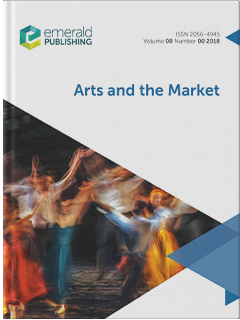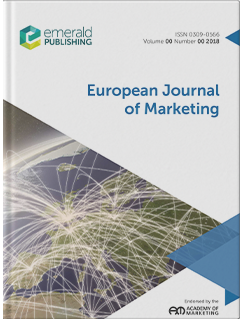
European Journal of Marketing
Before you start
Author responsibilities
Our goal is to provide you with a professional and courteous experience at each stage of the review and publication process. There are also some responsibilities that sit with you as the author. Our expectation is that you will:
- Respond swiftly to any queries during the publication process.
- Be accountable for all aspects of your work. This includes investigating and resolving any questions about accuracy or research integrity
- Treat communications between you and the journal editor as confidential until an editorial decision has been made.
- Read about our research ethics for authorship. These state that you must:
- Include anyone who has made a substantial and meaningful contribution to the submission (anyone else involved in the paper should be listed in the acknowledgements).
- Exclude anyone who hasn’t contributed to the paper, or who has chosen not to be associated with the research.
- In accordance with COPE’s position statement on AI tools, Large Language Models cannot be credited with authorship as they are incapable of conceptualising a research design without human direction and cannot be accountable for the integrity, originality, and validity of the published work.
- If your article involves human participants, you must ensure you have considered whether or not you require ethical approval for your research, and include this information as part of your submission. Find out more about informed consent.
Research and publishing ethics
Our editors and employees work hard to ensure the content we publish is ethically sound. To help us achieve that goal, we closely follow the advice laid out in the guidelines and flowcharts on the COPE (Committee on Publication Ethics) website.
We have also developed our research and publishing ethics guidelines. If you haven’t already read these, we urge you to do so – they will help you avoid the most common publishing ethics issues.
A few key points:
- Any manuscript you submit to this journal should be original. That means it should not have been published before in its current, or similar, form. Exceptions to this rule are outlined in our pre-print and conference paper policies. If any substantial element of your paper has been previously published, you need to declare this to the journal editor upon submission. Please note, the journal editor may use Crossref Similarity Check to check on the originality of submissions received. This service compares submissions against a database of 49 million works from 800 scholarly publishers.
- Your work should not have been submitted elsewhere and should not be under consideration by any other publication.
- If you have a conflict of interest, you must declare it upon submission; this allows the editor to decide how they would like to proceed. Read about conflict of interest in our research and publishing ethics guidelines.
- By submitting your work to Emerald, you are guaranteeing that the work is not in infringement of any existing copyright.
Third party copyright permissions
Prior to article submission, you need to ensure you’ve applied for, and received, written permission to use any material in your manuscript that has been created by a third party. Please note, we are unable to publish any article that still has permissions pending. The rights we require are:
- Non-exclusive rights to reproduce the material in the article or book chapter.
- Print and electronic rights.
- Worldwide English-language rights.
- To use the material for the life of the work. That means there should be no time restrictions on its re-use e.g. a one-year licence.
We are a member of the International Association of Scientific, Technical, and Medical Publishers (STM) and participate in the STM permissions guidelines, a reciprocal free exchange of material with other STM publishers. In some cases, this may mean that you don’t need permission to re-use content. If so, please highlight this at the submission stage.
Please take a few moments to read our guide to publishing permissions to ensure you have met all the requirements, so that we can process your submission without delay.
Open access submissions and information
All our journals currently offer two open access (OA) publishing paths; gold open access and green open access.
If you would like to, or are required to, make the branded publisher PDF (also known as the version of record) freely available immediately upon publication, you can select the gold open access route once your paper is accepted.
If you’ve chosen to publish gold open access, this is the point you will be asked to pay the APC (article processing charge). This varies per journal and can be found on our APC price list or on the editorial system at the point of submission. Your article will be published with a Creative Commons CC BY 4.0 user licence, which outlines how readers can reuse your work.
Alternatively, if you would like to, or are required to, publish open access but your funding doesn’t cover the cost of the APC, you can choose the green open access, or self-archiving, route. As soon as your article is published, you can make the author accepted manuscript (the version accepted for publication) openly available, free from payment and embargo periods.
You can find out more about our open access routes, our APCs and waivers and read our FAQs on our open research page.
Transparency and Openness Promotion (TOP) guidelines
We are a signatory of the Transparency and Openness Promotion (TOP) Guidelines, a framework that supports the reproducibility of research through the adoption of transparent research practices. That means we encourage you to:
- Cite and fully reference all data, program code, and other methods in your article.
- Include persistent identifiers, such as a Digital Object Identifier (DOI), in references for datasets and program codes. Persistent identifiers ensure future access to unique published digital objects, such as a piece of text or datasets. Persistent identifiers are assigned to datasets by digital archives, such as institutional repositories and partners in the Data Preservation Alliance for the Social Sciences (Data-PASS).
- Follow appropriate international and national procedures with respect to data protection, rights to privacy and other ethical considerations, whenever you cite data. For further guidance please refer to our research and publishing ethics guidelines. For an example on how to cite datasets, please refer to the references section below.
Prepare your submission
Manuscript support services
We are pleased to partner with Editage, a platform that connects you with relevant experts in language support, translation, editing, visuals, consulting, and more. After you’ve agreed a fee, they will work with you to enhance your manuscript and get it submission-ready.
This is an optional service for authors who feel they need a little extra support. It does not guarantee your work will be accepted for review or publication.
Manuscript requirements
Before you submit your manuscript, it’s important you read and follow the guidelines below. You will also find some useful tips in our structure your journal submission how-to guide.
|
Format |
Article files should be provided in Microsoft Word format While you are welcome to submit a PDF of the document alongside the Word file, PDFs alone are not acceptable. LaTeX files can also be used but only if an accompanying PDF document is provided. Acceptable figure file types are listed further below. |
|
Article length / wordcount |
Articles should be up to a maximum of 12000 words in length. This includes all text, for example, the structured abstract, references, all text in tables, and figures and appendices.
Please allow 280 words for each figure or table. |
|
Article title |
A concisely worded title should be provided. |
|
Author details |
The names of all contributing authors should be added to the ScholarOne submission; please list them in the order in which you’d like them to be published. Each contributing author will need their own ScholarOne author account, from which we will extract the following details:
In multi-authored papers, it’s important that ALL authors that have made a significant contribution to the paper are listed. Those who have provided support but have not contributed to the research should be featured in an acknowledgements section. You should never include people who have not contributed to the paper or who don’t want to be associated with the research. Read about our research ethics for authorship. |
|
Biographies and acknowledgements |
If you want to include these items, save them in a separate Microsoft Word document and upload the file with your submission. Where they are included, a brief professional biography of not more than 100 words should be supplied for each named author. |
|
Research funding |
Your article must reference all sources of external research funding in the acknowledgements section. You should describe the role of the funder or financial sponsor in the entire research process, from study design to submission. |
|
Structured abstract |
All submissions must include a structured abstract, following the format outlined below. These four sub-headings and their accompanying explanations must always be included:
The following three sub-headings are optional and can be included, if applicable:
The maximum length of your abstract should be 250 words in total, including keywords and article classification (see the sections below). |
|
Keywords |
Your submission should include up to 12 appropriate and short keywords that capture the principal topics of the paper. Our Creating an SEO-friendly manuscript how to guide contains some practical guidance on choosing search-engine friendly keywords. Please note, while we will always try to use the keywords you’ve suggested, the in-house editorial team may replace some of them with matching terms to ensure consistency across publications and improve your article’s visibility. |
|
Article classification |
During the submission process, you will be asked to select a type for your paper; the options are listed below. If you don’t see an exact match, please choose the best fit:
You will also be asked to select a category for your paper. The options for this are listed below. If you don’t see an exact match, please choose the best fit: Research paper. Reports on any type of research undertaken by the author(s), including:
Viewpoint. Covers any paper where content is dependent on the author's opinion and interpretation. This includes journalistic and magazine-style pieces. Technical paper. Describes and evaluates technical products, processes or services. Conceptual paper. Focuses on developing hypotheses and is usually discursive. Covers philosophical discussions and comparative studies of other authors’ work and thinking. Case study. Describes actual interventions or experiences within organizations. It can be subjective and doesn’t generally report on research. Also covers a description of a legal case or a hypothetical case study used as a teaching exercise. Literature review. This category should only be used if the main purpose of the paper is to annotate and/or critique the literature in a particular field. It could be a selective bibliography providing advice on information sources, or the paper may aim to cover the main contributors to the development of a topic and explore their different views. General review. Provides an overview or historical examination of some concept, technique or phenomenon. Papers are likely to be more descriptive or instructional (‘how to’ papers) than discursive. |
|
Headings |
Headings must be concise, with a clear indication of the required hierarchy. |
|
Notes/endnotes |
Notes or endnotes should only be used if absolutely necessary. They should be identified in the text by consecutive numbers enclosed in square brackets. These numbers should then be listed, and explained, at the end of the article. |
|
Figures |
All figures (charts, diagrams, line drawings, webpages/screenshots, and photographic images) should be submitted electronically. Both colour and black and white files are accepted.
|
|
Tables |
Tables should be typed and submitted in a separate file to the main body of the article. The position of each table should be clearly labelled in the main body of the article with corresponding labels clearly shown in the table file. Tables should be numbered consecutively in Roman numerals (e.g. I, II, etc.). |
|
Supplementary files |
Where tables, figures, appendices, and other additional content are supplementary to the article but not critical to the reader’s understanding of it, you can choose to host these supplementary files alongside your article on Insight, Emerald’s content hosting platform, or on an institutional or personal repository. All supplementary material must be submitted prior to acceptance. If you choose to host your supplementary files on Insight, you must submit these as separate files alongside your article. Files should be clearly labelled in such a way that makes it clear they are supplementary; Emerald recommends that the file name is descriptive and that it follows the format ‘Supplementary_material_appendix_1’ or ‘Supplementary tables’. All supplementary material must be mentioned at the appropriate moment in the main text of the article, there is no need to include the content of the file but only the file name. A link to the supplementary material will be added to the article during production, and the material will be made available alongside the main text of the article at the point of EarlyCite publication. Please note that Emerald will not make any changes to the material; it will not be copyedited, typeset, and authors will not receive proofs. Emerald therefore strongly recommends that you style all supplementary material ahead of acceptance of the article. Emerald Insight can host the following file types and extensions:
If you choose to use an institutional or personal repository, you should ensure that the supplementary material is hosted on the repository ahead of submission, and then include a link only to the repository within the article. It is the responsibility of the submitting author to ensure that the material is free to access and that it remains permanently available. Please note that extensive supplementary material may be subject to peer review; this is at the discretion of the journal Editor and dependent on the content of the material (for example, whether including it would support the reviewer making a decision on the article during the peer review process). |
|
References |
All references in your manuscript must be formatted using one of the recognised Harvard styles. You are welcome to use the Harvard style Emerald has adopted – we’ve provided a detailed guide below. Want to use a different Harvard style? That’s fine, our typesetters will make any necessary changes to your manuscript if it is accepted. Please ensure you check all your citations for completeness, accuracy and consistency; this enables your readers to exploit the reference linking facility on the database and link back to the works you have cited through CrossRef. Emerald’s Harvard referencing style References to other publications in your text should be written as follows:
A few other style points. These apply to both the main body of text and your final list of references.
At the end of your paper, please supply a reference list in alphabetical order using the style guidelines below. Where a DOI is available, this should be included at the end of the reference. |
|
For books |
Surname, initials (year), title of book, publisher, place of publication. e.g. Harrow, R. (2005), No Place to Hide, Simon & Schuster, New York, NY. |
|
For book chapters |
Surname, initials (year), "chapter title", editor's surname, initials (Ed.), title of book, publisher, place of publication, page numbers. e.g. Calabrese, F.A. (2005), "The early pathways: theory to practice – a continuum", Stankosky, M. (Ed.), Creating the Discipline of Knowledge Management, Elsevier, New York, NY, pp.15-20. |
|
For journals |
Surname, initials (year), "title of article", journal name, volume issue, page numbers. e.g. Capizzi, M.T. and Ferguson, R. (2005), "Loyalty trends for the twenty-first century", Journal of Consumer Marketing, Vol. 22 No. 2, pp.72-80. |
|
For published |
Surname, initials (year of publication), "title of paper", in editor’s surname, initials (Ed.), title of published proceeding which may include place and date(s) held, publisher, place of publication, page numbers. e.g. Wilde, S. and Cox, C. (2008), “Principal factors contributing to the competitiveness of tourism destinations at varying stages of development”, in Richardson, S., Fredline, L., Patiar A., & Ternel, M. (Ed.s), CAUTHE 2008: Where the 'bloody hell' are we?, Griffith University, Gold Coast, Qld, pp.115-118. |
|
For unpublished |
Surname, initials (year), "title of paper", paper presented at [name of conference], [date of conference], [place of conference], available at: URL if freely available on the internet (accessed date). e.g. Aumueller, D. (2005), "Semantic authoring and retrieval within a wiki", paper presented at the European Semantic Web Conference (ESWC), 29 May-1 June, Heraklion, Crete, available at: http://dbs.uni-leipzig.de/file/aumueller05wiksar.pdf (accessed 20 February 2007). |
|
For working papers |
Surname, initials (year), "title of article", working paper [number if available], institution or organization, place of organization, date. e.g. Moizer, P. (2003), "How published academic research can inform policy decisions: the case of mandatory rotation of audit appointments", working paper, Leeds University Business School, University of Leeds, Leeds, 28 March. |
|
For encyclopaedia entries |
Title of encyclopaedia (year), "title of entry", volume, edition, title of encyclopaedia, publisher, place of publication, page numbers. e.g. Encyclopaedia Britannica (1926), "Psychology of culture contact", Vol. 1, 13th ed., Encyclopaedia Britannica, London and New York, NY, pp.765-771. (for authored entries, please refer to book chapter guidelines above) |
|
For newspaper |
Surname, initials (year), "article title", newspaper, date, page numbers. e.g. Smith, A. (2008), "Money for old rope", Daily News, 21 January, pp.1, 3-4. |
|
For newspaper |
Newspaper (year), "article title", date, page numbers. e.g. Daily News (2008), "Small change", 2 February, p.7. |
|
For archival or other unpublished sources |
Surname, initials (year), "title of document", unpublished manuscript, collection name, inventory record, name of archive, location of archive. e.g. Litman, S. (1902), "Mechanism & Technique of Commerce", unpublished manuscript, Simon Litman Papers, Record series 9/5/29 Box 3, University of Illinois Archives, Urbana-Champaign, IL. |
|
For electronic sources |
If available online, the full URL should be supplied at the end of the reference, as well as the date that the resource was accessed. Surname, initials (year), “title of electronic source”, available at: persistent URL (accessed date month year). e.g. Weida, S. and Stolley, K. (2013), “Developing strong thesis statements”, available at: https://owl.english.purdue.edu/owl/resource/588/1/ (accessed 20 June 2018) Standalone URLs, i.e. those without an author or date, should be included either inside parentheses within the main text, or preferably set as a note (roman numeral within square brackets within text followed by the full URL address at the end of the paper). |
|
For data |
Surname, initials (year), title of dataset, name of data repository, available at: persistent URL, (accessed date month year). e.g. Campbell, A. and Kahn, R.L. (2015), American National Election Study, 1948, ICPSR07218-v4, Inter-university Consortium for Political and Social Research (distributor), Ann Arbor, MI, available at: https://doi.org/10.3886/ICPSR07218.v4 (accessed 20 June 2018) |
Submit your manuscript
There are a number of key steps you should follow to ensure a smooth and trouble-free submission.
Double check your manuscript
Before submitting your work, it is your responsibility to check that the manuscript is complete, grammatically correct, and without spelling or typographical errors. A few other important points:
- Give the journal aims and scope a final read. Is your manuscript definitely a good fit? If it isn’t, the editor may decline it without peer review.
- Does your manuscript comply with our research and publishing ethics guidelines?
- Have you cleared any necessary publishing permissions?
- Have you followed all the formatting requirements laid out in these author guidelines?
- Does the manuscript contain any information that might help the reviewer identify you? This could compromise the blind peer review process. A few tips:
- If you need to refer to your own work, use wording such as ‘previous research has demonstrated’ not ‘our previous research has demonstrated’.
- If you need to refer to your own, currently unpublished work, don’t include this work in the reference list.
- Any acknowledgments or author biographies should be uploaded as separate files.
- Carry out a final check to ensure that no author names appear anywhere in the manuscript. This includes in figures or captions.
You will find a helpful submission checklist on the website Think.Check.Submit.
The submission process
All manuscripts should be submitted through our editorial system by the corresponding author.
The only way to submit to the journal is through the journal’s ScholarOne site as accessed via the Emerald website, and not by email or through any third-party agent/company, journal representative, or website. Submissions should be done directly by the author(s) through the ScholarOne site and not via a third-party proxy on their behalf.
A separate author account is required for each journal you submit to. If this is your first time submitting to this journal, please choose the Create an account or Register now option in the editorial system. If you already have an Emerald login, you are welcome to reuse the existing username and password here.
Please note, the next time you log into the system, you will be asked for your username. This will be the email address you entered when you set up your account.
In addition, we require all authors to provide an ORCiD iD when submitting to this journal. If you do not already have an ORCiD iD, please follow the instructions on how to create one here. ORCid iD allows all researchers to distinguish themselves with a career-long identifier that groups all of their work together. It will be embedded in your published article, along with a link to the ORCiD registry allowing others to easily match you with your work.
Visit the ScholarOne support centre for further help and guidance.
What you can expect next
You will receive an automated email from the journal editor, confirming your successful submission. It will provide you with a manuscript number, which will be used in all future correspondence about your submission. If you have any reason to suspect the confirmation email you receive might be fraudulent, please contact our Rights team.
Manuscript transfer service
Emerald’s manuscript transfer service takes the pain out of the submission process if your manuscript doesn’t fit your initial journal choice. Our team of expert Editors from participating journals work together to identify alternative journals that better align with your research, ensuring your work finds the ideal publication home it deserves. Our dedicated team is committed to supporting authors like you in finding the right home for your research.
If a journal is participating in the manuscript transfer program, the Editor has the option to recommend your paper for transfer. If a transfer decision is made by the Editor, you will receive an email with the details of the recommended journal and the option to accept or reject the transfer. It’s always down to you as the author to decide if you’d like to accept. If you do accept, your paper and any reviewer reports will automatically be transferred to the recommended journals. Authors will then confirm resubmissions in the new journal’s ScholarOne system.
Our Manuscript Transfer Service page has more information on the process.
Post submission
Review and decision process
Each submission is checked by the editor. At this stage, they may choose to decline or unsubmit your manuscript if it doesn’t fit the journal aims and scope, or they feel the language/manuscript quality is too low.
If they think it might be suitable for the publication, they will send it to at least two independent referees for double-anonymous peer review. Once these reviewers have provided their feedback, the editor may decide to accept your manuscript, request minor or major revisions, or decline your work.
If they think it might be suitable for the publication, they will send it to at least two independent referees for triple-anonymous peer review. Once these reviewers have provided their feedback, the editor may decide to accept your manuscript, request minor or major revisions, or decline your work.
This journal offers an article transfer service. If the editor decides to decline your manuscript, either before or after peer review, they may offer to transfer it to a more relevant Emerald journal in this field. If you accept, your ScholarOne author account, and the accounts of your co-authors, will automatically transfer to the new journal, along with your manuscript and any accompanying peer review reports. However, you will still need to log in to ScholarOne to complete the submission process using your existing username and password. While accepting a transfer does not guarantee the receiving journal will publish your work, an editor will only suggest a transfer if they feel your article is a good fit with the new title.
While all journals work to different timescales, the goal is that the editor will inform you of their first decision within 60 days.
During this period, we will send you automated updates on the progress of your manuscript via our submission system, or you can log in to check on the current status of your paper. Each time we contact you, we will quote the manuscript number you were given at the point of submission. If you receive an email that does not match these criteria, it could be fraudulent and we recommend you email [email protected].
If your submission is accepted
Open access
Once your paper is accepted, you will have the opportunity to indicate whether you would like to publish your paper via the gold open access route.
If you’ve chosen to publish gold open access, this is the point you will be asked to pay the APC (article processing charge). This varies per journal and can be found on our APC price list or on the editorial system at the point of submission. Your article will be published with a Creative Commons CC BY 4.0 user licence, which outlines how readers can reuse your work.
Copyright
All accepted authors are sent an email with a link to a licence form. This should be checked for accuracy, for example whether contact and affiliation details are up to date and your name is spelled correctly, and then returned to us electronically. If there is a reason why you can’t assign copyright to us, you should discuss this with your journal content editor. You will find their contact details on the editorial team section above.
Proofing and typesetting
Once we have received your completed licence form, the article will pass directly into the production process. We will carry out editorial checks, copyediting, and typesetting and then return proofs to you (if you are the corresponding author) for your review. This is your opportunity to correct any typographical errors, grammatical errors or incorrect author details. We can’t accept requests to rewrite texts at this stage.
When the page proofs are finalised, the fully typeset and proofed version of record is published online. This is referred to as the EarlyCite version. While an EarlyCite article has yet to be assigned to a volume or issue, it does have a digital object identifier (DOI) and is fully citable. It will be compiled into an issue according to the journal’s issue schedule, with papers being added by chronological date of publication.
How to share your paper
Visit our author rights page to find out how you can reuse and share your work.
To find tips on increasing the visibility of your published paper, read about how to promote your work.
Correcting inaccuracies in your published paper
Sometimes errors are made during the research, writing and publishing processes. When these issues arise, we have the option of withdrawing the paper or introducing a correction notice. Find out more about our article withdrawal and correction policies.
Need to make a change to the author list? See our frequently asked questions (FAQs) below.
Frequently asked questions
The only time we will ever ask you for money to publish in an Emerald journal is if you have chosen to publish via the gold open access route. You will be asked to pay an APC (article-processing charge) once your paper has been accepted (unless it is a sponsored open access journal), and never at submission.
At no other time will you be asked to contribute financially towards your article’s publication, processing, or review. If you haven’t chosen gold open access and you receive an email that appears to be from Emerald, the journal, or a third party, asking you for payment to publish, please contact our support team via [email protected].
-
Editor-in-Chief
-
Professor
Greg W.
Marshall
Rollins College, USA<br />Aston Business School - UK
[email protected]
-
Professor
Greg W.
Marshall
-
Editorial Manager
-
Liliana
Denneen
Rollins College - USA
[email protected]
-
Liliana
Denneen
-
Editorial Assistant
-
Maia
Russell
Rollins College - USA
[email protected]
-
Maia
Russell
-
Regional Editors - North America
-
Associate Professor
François
Carrillat
HEC Montréal - Canada
[email protected]
-
Associate Professor
François
Carrillat
-
Regional Editors – Asia Pacific
-
Associate Professor
Jasmina
Ilicic
Monash University - Australia
-
Judith
Moyle
Aston Business School - UK
-
Associate Professor
Jasmina
Ilicic
-
Regional Editors - Europe
-
Professor
Debbie Isobel Keeling
University of Sussex - UK
[email protected]
-
Professor
Debbie Isobel Keeling
-
Associate Editor
-
Dr.
Sascha
Alavi
Ruhr-University of Bochum - Germany
-
Dr
Todd J.
Arnold
Oklahoma State University - USA
-
Professor
Nicholas J.
Ashill
Victoria University of Wellington - New Zealand
-
Associate Professor
Neil Thomas
Bendle
Ivey Business School - Canada
-
Assistant Professor
Benjamin
Boeuf
IÉSEG School of Management - France
-
Associate Professor
Paul F.
Burke
University of Technology Sydney - Australia
-
Associate Professor
Gopal
Das
Indian Institute of Management Bangalore - India
-
Associate Professor
John
Dawes
University of South Australia - Australia
-
Professor
Charles
Dennis
University of Middlesex - UK
-
Professor
Yogesh Kumar
Dwivedi
Swansea University - UK
-
Dr
Dahlia
El-Manstrly
University of Edinburgh Business School - UK
-
Dr
Chavi Chi-Yun
Fletcher-Chen
IÉSEG School of Management - France
-
Dr
David I.
Gilliland
Colorado State University - USA
-
Professor
Spiros
Gounaris
University of Strathclyde - UK
-
Professor
Debra
Grace
Griffith University - Australia
-
Assistant Professor
Abhijit
Guha
University of South Carolina - USA
-
Dr
Ian R.
Hodgkinson
Loughborough University - UK
-
Professor
Avid O. I.
Hoffmann
University of Adelaide Business School - Australia
-
Linda D.
Hollebeek
Sunway University - Malaysia
-
Associate Professor
Jessica J.
Hoppner
George Mason University - USA
-
Associate Professor
Jasmina
Ilicic
Monash University - Australia
-
Associate Professor
Jorge Fernando
Jaramillo
University of Texas at Arlington - USA
-
Dr
Babu
John-Mariadoss
Texas Tech University - USA
-
Professor
Velitchka D.
Kaltcheva
Loyola Marymount University - USA
-
Dr
Mike
Lee
University of Auckland - New Zealand
-
Dr
Jennifer
Lees-Marshment
University of Auckland - New Zealand
-
Professor
Annouk
Lievens
University of Antwerp - Belgium
-
Associate Professor
Ian
Lings
Queensland University of Technology - Australia
-
Professor
Ben
Lowe
Kent Business School - UK
-
Professor
Sreedhar
Madhavaram
Texas Tech University - USA
-
Professor
Francisco J.
Martínez-López
University of Granada - Spain
-
Professor
Robert E.
McDonald
Texas Tech University - USA
-
Professor
Ulrich R
Orth
Christian-Albrechts-Universitat Kiel - Germany
-
Associate Professor
Joonas
Rokka
Emlyon Business School - France
-
Associate Professor
Sanjit Kumar
Roy
The University of Western Australia (Australia)
-
Associate Professor
Cláudia
Simões
University of Minho - Portugal
-
Professor
Anne L.
Souchon
Loughborough University - UK
-
Associate Professor
Scott
Swain
Clemson University - USA
-
Professor
Walter
Wymer
University of Lethbridge - Canada
-
Professor
Zhilin (Forrest)
Yang
City University of Hong Kong - Hong Kong
-
Associate Professor
Michel
van der Borgh
Copenhagen Business School - Denmark
-
Dr.
Sascha
Alavi
-
Publisher
-
Richard
Whitfield
[email protected]
-
Richard
Whitfield
-
Journal Editorial Office (For queries related to pre-acceptance)
-
Sanjana
Kuril
Emerald Publishing
[email protected]
-
Sanjana
Kuril
-
Supplier Project Manager (For queries related to post-acceptance)
-
Ashwani
Singh
Emerald Publishing
[email protected]
-
Ashwani
Singh
-
Senior Advisory Board
-
Professor
Kwaku
Atuahene-Gima
China Europe International Business School - People's Republic of China
-
Professor
Rod
Brodie
Auckland University - New Zealand
-
Stephen
Brown
University of Ulster - UK
-
Professor
David W
Cravens
Texas Christian University - USA
-
Professor
Peter
Danaher
Monash University - Australia
-
Professor
Marnik
Dekimpe
Catholic University of Tilburg/Leuven University - Netherlands
-
Professor
Adamantios
Diamantopoulos
Department of Business Administration, University of Vienna - Austria
-
Professor
Evert
Gummesson
Stockholm University - Sweden
-
Professor
Jaideep
Prabhu
University of Cambridge - UK
-
Dr
Lisa
Scheer
University of Missouri-Columbia - USA
-
Professor
Leigh
Sparks
University of Stirling - UK
-
Professor
Kwaku
Atuahene-Gima
-
Editorial Review Board
-
Mr
Ali Bin Khalifa
Al-Khalifa
University of Bahrain - Bahrain
-
Professor
Nicholas
Alexander
Lancaster University - UK
-
Dr
Douglas A.
Amyx
Louisiana Tech University - USA
-
Dr
Lynda
Andrews
Queensland University of Technology - Australia
-
Dr
Paolo
Antonetti
NEOMA Business School - France
-
Professor
George J
Avlonitis
Athens University of Economics - Greece
-
Dr
Vishag
Badrinarayanan
Texas State University - USA
-
Professor
Michael J.
Baker
University of Strathclyde - UK
-
Dr
David
Ballantyne
University of Otago - New Zealand
-
Professor
John M.T.
Balmer
Brunel University - UK
-
Professor
Syagnik
Banerjee
University of Michigan-Flint - USA
-
Dr
Yeqing
Bao
University of Alabama in Huntsville - USA
-
Associate Professor
Donald
Barnes
University of North Carolina Wilmington - USA
-
Dr
James M.
Barry
Nova Southeastern University - USA
-
Professor
Roger
Bennett
London Metropolitan University - UK
-
Dr
Ali
Besharat
University of Denver - USA
-
Professor
Xuemei
Bian
Northumbria University - UK
-
Professor
Grete
Birtwistle
Glasgow Caledonian University - UK
-
Dr
Bjorn
Bjerke
King Fahd University of Petroleum & Minerals - Saudi Arabia
-
Associate Professor
Jana Lay-Hwa
Bowden
Macquarie University - Australia
-
Prof Dr
Manfred
Bruhn
University of Basel - Switzerland
-
Emeritus Professor
David J
Carson
University of Ulster at Jordanstown - UK
-
Dr
Eugene Y.
Chan
Monash University - Australia
-
Professor
Damien
Chaney
Groupe ESC Troyes - France
-
Professor
Leslie de
Chernatony
Aston Business School - UK
-
Professor
Sylvie
Chetty
University of Otago - New Zealand
-
Associate Professor
Sunmee
Choi
Yonsei University - South Korea
-
Associate Professor
Henry F. L.
Chung
Massey University - New Zealand
-
Professor
Nicole E
Coviello
Wilfrid Laurier University - Canada
-
Professor
Neel
Das
Appalachian State University - USA
-
Dr
Kenneth R
Deans
La Rochelle Business School - France
-
Elena
Delgado-Ballester
Campus de Espinardo - Spain
-
Professor
Anne Marie
Doherty
University of Strathclyde - UK
-
Professor
Bill
Donaldson
The Robert Gordon University - UK
-
Professor
John
Egan
London South Bank University - UK
-
Professor
Kim Shyan
Fam
Victoria University of Wellington - New Zealand
-
Associate Professor
Xiang
Fang
Oklahoma State University - USA
-
Dr
Andrew M.
Farrell
Aston Business School - UK
-
Mr
Damian
Gallagher
Aberystwyth University - UK
-
Associate Professor
Nitika
Garg
University of New South Wales - Australia
-
Pervez N.
Ghauri
Kings College London - UK
-
Professor
Audrey
Gilmore
University of Ulster - UK
-
Dr
Marilyn
Giroux
Auckland University of Technology - New Zealand
-
Professor
Christina
Goulding
University of Coventry - UK
-
Professor
Kjell
Grønhaug
Norwegian School of Economics and Business Administration - Norway
-
Professor
Chris
Hackley
Royal Holloway University of London - UK
-
Dr
Rob
Hamlin
University of Otago - New Zealand
-
Dr
Jennifer
Harris
The University of New South Wales - Australia
-
Professor
Lloyd
Harris
University of Birmingham - UK
-
Professor
Phil
Harris
University of Chester - UK
-
Assistant Professor
Tim
Hilken
Maastricht University - Netherlands
-
Professor
Christopher D.
Hopkins
Raymond J. Harbert College of Business - USA
-
Professor
Gabor
Hovanyi
University of Pecs - Hungary
-
Professor
Claes
Hultman
Örebro University - Sweden
-
Professor
Chiharu
Ishida
Illinois State University - USA
-
Dr
Matti
Jaakkola
University of Manchester - UK
-
Associate Professor
Fernando R.
Jiménez
The University of Texas at El Paso - USA
-
Dr
Laszlo
Karpati
Budapest Business School - Hungary
-
Professor
Erdener
Kaynak
Pennsylvania State University - USA
-
Professor
David A
Kirby
The British University in Egypt - Egypt
-
Professor
Philip J
Kitchen
Keele University - UK
-
Associate Professor
Mirella
Kleijnen
Vrije Universiteit Amsterdam - Netherlands
-
Dr
Simon D
Knox
Cranfield University - UK
-
Associate Professor
Anjala
Krishen
University of Nevada, Las Vegas - USA
-
Assistant Professor
JaeHwan
Kwon
Baylor University - USA
-
Professor
Raymond W
LaForge
University of Louisville - USA
-
Associate Professor
Daniel
Laufer
Victoria University of Wellington - New Zealand
-
Dr
Meredith
Lawley
University of the Sunshine Coast - Australia
-
Professor
Veronica
Liljander
Swedish School of Economics and Business Administration - Finland
-
Professor
Adam
Lindgreen
Copenhagen Business School - Denmark
-
Professor
Matthew Tingchi
Liu
University of Macau - Macau
-
Assistant Professor
Ruxandra Monica
Luca
HEC Montreal - Canada
-
Assistant Professor
Frank
Mathmann
Queensland University of Technology - Australia
-
Dr
Marc
Mazodier
ESSEC Business School - France
-
Professor
Andrew
McAuley
Southern Cross University - Australia
-
Dr
Rosalind
McMullan
The Coves Consulting - UK
-
Professor
Bill
Merrilees
Griffith University - Australia
-
Professor
Morgan
Miles
Charles Sturt University - Australia
-
Associate Professor
Kobe
Millet
Vrije Universiteit Amsterdam - Netherlands
-
Dr
Laetitia
Mimoun
City, University of London - UK
-
Associate Professor
Mayoor
Mohan
Virginia Commonwealth University - USA
-
Professor
Luiz
Montinho
University of Glasgow Business School - UK
-
Dr
Erik
Mooi
University of Melbourne - Australia
-
Professor
Robert E
Morgan
Cardiff Business School - UK
-
Professor
Patrick
Murphy
University of Notre Dame - USA
-
Dr
Elina
Narvanen
University of Tampere - Finland
-
Professor
Magda
Nenycz-Thiel
University of South Australia - Australia
-
Tahir M.
Nisar
Southampton Business School, University of Southampton, UK
-
Dr
Valeria
Noguti
University of Technology Sydney - Australia
-
Professor
Aron
O'Cass
La Trobe University - Australia
-
Associate Professor
Kelley A.
O'Reilly
Western Michigan University - USA
-
Dr
Thomas
O'Toole
Waterford Institute of Technology - UK
-
Dr
Harmen
Oppewal
Monash University - Australia
-
Dr
Davide Christian
Orazi
Monash University - USA
-
Professor
Adrian J
Palmer
University of Wales Swansea - UK
-
Dr
Ravi
Pappu
University of Queensland - Australia
-
Professor
Paul G
Patterson
The University of New South Wales - Australia
-
Assistant Professor
Teresa
Pereira Heath
Nottingham University Business School, University of Nottingham - UK
-
Professor
Ian
Phau
Curtin University - Australia
-
Professor
Michael Jay
Polonsky
Deakin University - Australia
-
Professor
Thomas
Powers
University of Alabama at Birmingham - USA
-
Professor
Gerard
Prendergast
Hong Kong Baptist University - Hong Kong
-
Dr
Daniel
Prior
The University of New South Wales - Australia
-
Associate Professor
Edward
Ramirez
The University of Texas at El Paso - USA
-
Dr
Peter
Reeves
University of Salford - UK
-
Dr
James E.
Richard
Victoria University of Wellington - New Zealand
-
Professor
Gregory
Rose
University of Washington - USA
-
Dr
Rajat
Roy
Bond University - Australia
-
Dr
John M.
Rudd
Warwick Business School - UK
-
Professor
Jonathan
Schroeder
Rochester Institute of Technology - USA
-
Professor
Piyush
Sharma
Curtin University - Australia
-
Dr
Birud
Sindhav
University of Nebraska Omaha - USA
-
Professor
Wai
Siu
Hong Kong Baptist University - Hong Kong
-
Dr
Amanda
Spry
Royal Melbourne Institute of Technology - Australia
-
Professor
Isabelle T D
Szmigin
University of Birmingham - UK
-
Associate Professor
Ramendra
Thakur
University of Louisiana at Lafayette - USA
-
Professor
Hans Mathias
Thjømøe
Norwegian School of Management - Norway
-
Peter W
Turnbull
The Birmingham Business School - UK
-
Associate Professor
Sven
Tuzovic
Queensland University of Technology - Australia
-
Professor
Caroline
Tynan
Nottingham University Business School - UK
-
Professor
Richard
Varey
University of Waikato - New Zealand
-
Professor
Cleopatra A
Veloutsou
University of Glasgow - UK
-
Associate Professor
Pavlos A.
Vlachos
ALBA Graduate Business School - Greece
-
Professor
Martin
Wetzels
EDHEC Business School - France
-
Professor
Len Tiu
Wright
-
Professor
Poh-Lin
Yeoh
Bentley University - USA
-
Dr
Ting
Yu
University of New South Wales - Australia
-
Dr
Xiaohua
Zeng
Peking University - People's Republic of China
-
Professor
Judy
Zolkiewski
Alliance Manchester Business School - UK
-
Mr
Ali Bin Khalifa
Al-Khalifa
Citation metrics
6.9
CiteScore 2023
6.9
CiteScore 2023
Further information
CiteScore is a simple way of measuring the citation impact of sources, such as journals.
Calculating the CiteScore is based on the number of citations to documents (articles, reviews, conference papers, book chapters, and data papers) by a journal over four years, divided by the number of the same document types indexed in Scopus and published in those same four years.
For more information and methodology visit the Scopus definition
6.9
CiteScore Tracker 2024
(updated monthly)
6.9
CiteScore Tracker 2024
(updated monthly)
Further information
CiteScore is a simple way of measuring the citation impact of sources, such as journals.
CiteScore Tracker is calculated in the same way as CiteScore, but for the current year rather than previous, complete years.
The CiteScore Tracker calculation is updated every month, as a current indication of a title's performance.
For more information and methodology visit the Scopus definition
3.70
2023 Impact Factor
3.70
2023 Impact Factor
Further information
The Journal Impact Factor is published each year by Clarivate Analytics. It is a measure of the number of times an average paper in a particular journal is cited during the preceding two years.
For more information and methodology see Clarivate Analytics
5.5
5-year Impact Factor (2023)
5.5
5-year Impact Factor (2023)
Further information
A base of five years may be more appropriate for journals in certain fields because the body of citations may not be large enough to make reasonable comparisons, or it may take longer than two years to publish and distribute leading to a longer period before others cite the work.
Actual value is intentionally only displayed for the most recent year. Earlier values are available in the Journal Citation Reports from Clarivate Analytics.
Publication timeline
Time to first decision
109
days
Time to first decision
109
days
Further information
Time to first decision, expressed in days, the "first decision" occurs when the journal’s editorial team reviews the peer reviewers’ comments and recommendations. Based on this feedback, they decide whether to accept, reject, or request revisions for the manuscript.
Data is taken from submissions between 1st June 2023 and 31st May 2024
Acceptance to publication
36
days
Acceptance to publication
36
days
Further information
Acceptance to publication, expressed in days, is the average time between when the journal’s editorial team decide whether to accept, reject, or request revisions for the manuscript and the date of publication in the journal.
Data is taken from the previous 12 months (Last updated July 2024)
Acceptance rate
10
%
Acceptance rate
10
%
Further information
The acceptance rate is a measurement of how many manuscripts a journal accepts for publication compared to the total number of manuscripts submitted expressed as a percentage %
Data is taken from submissions between 1st June 2023 and 31st May 2024.
Usage
Downloads
67043
Articles
Downloads
67043
Articles
Further information
This figure is the total amount of downloads for all articles published early cite in the last 12 months
(Last updated: July 2024)
This journal is abstracted and indexed by
ISI Social Sciences Citation Index; ISI Journal Citation Reports; ISI Research Alert; Emerald Management Reviews; Academic Research; Autographics; Business & Industry; Business Source; Cabell's Directory of Publishing Opportunities in Management & Marketing; Collectanea Corporate; CPI Digest; Current Citations Express;Electronic Collections Online; EP Collection; Expanded Academic Index; Galileo; General Reference Center; Innovative; INSPEC; Leisure Recreation and Tourism Abstracts; Manning & Napier; MasterFILE; OCLC; PsycINFO; ReadCube Discover; Scandinavia; Telebase; World Bank Magazine; Zetoc (British Library), CNRS France, FNEGE France; The Publication Forum (Finland).
Ranked by:
AIDEA (Italy); Australian Business Deans Council (ABDC) Journal Quality List - A* ranking; Chartered Association of Business Schools (CABS, UK) Academic Journal Guide; FMS Journal Rating Guide (B); Scopus
ESSEC Rankings of Journals 2016
Reviewer information
Peer review process
This journal engages in a double-anonymous peer review process, which strives to match the expertise of a reviewer with the submitted manuscript. Reviews are completed with evidence of thoughtful engagement with the manuscript, provide constructive feedback, and add value to the overall knowledge and information presented in the manuscript.
Mission
The mission of the peer review process is to achieve excellence and rigour in scholarly publications and research.
Vision
Our vision is to give voice to professionals in the subject area who contribute unique and diverse scholarly perspectives to the field.
Values
The journal values diverse perspectives from the field and reviewers who provide critical, constructive, and respectful feedback to authors. Reviewers come from a variety of organizations, careers, and backgrounds from around the world.
Ethics
All invitations to review, abstracts, manuscripts, and reviews should be kept confidential. Reviewers must not share their review or information about the review process with anyone without the agreement of the editors and authors involved, even after publication. This also applies to other reviewers’ “comments to author” which are shared with you on decision.

Resources to guide you through the review process
Discover practical tips and guidance on all aspects of peer review in our reviewers' section. See how being a reviewer could benefit your career, and discover what's involved in shaping a review.
News
Thank you to the 2022 Reviewers of European Journal of Marketing
The publishing and editorial teams would like to thank the following, for their invaluable service as 2022 reviewers for this journal. We are very grateful for the contributions made. With their help, the journal has been able to publish such high...
Thank you to the 2021 Reviewers of European Journal of Marketing
The publishing and editorial teams would like to thank the following, for their invaluable service as 2021 reviewers for this journal. We are very grateful for the contributions made. With their help, the journal has been able to publish such high...
Literati awards

European Journal of Marketing - Literati Award Winners 2022
We are pleased to announce our 2022 Literati Award winners. Outstanding Paper Consumer engagement within ret...

European Journal of Marketing - Literati Award Winners 2020
We are to pleased to announce our 2020 Literati Award winners. Outstanding Journal Contribution Ben Lowe Outstanding Reviewer Betty Wu ...
The EJM offers unparalleled insights on new research, current practice and future trends so that practitioners and academics can gain a useful overview of marketing activity and apply that knowledge to develop appropriate strategies.
eISSN: 0309-0566

Aims and scope
Whilst the European Journal of Marketing (EJM) retains a European brand identity we are a truly international journal, actively encouraging global contributions from scholars across the broad domain of marketing.
We welcome novel and ground-breaking contributions from a wide range of research traditions within marketing, particularly encouraging innovative ideas in conceptual developments and research methodologies.
The EJM is not preferentially disposed towards either empirical work or pure theory, nor towards one particular method or approach.
EJM will be an outlet for research that is:
- based on rigorous, high quality scholarly work of international standing
- from a diverse range of methodological, philosophical and theoretical approaches
- situated within either a pure or applied research tradition
- derived from stringent theoretical conceptualization, and appropriate and defensible research methodology
- well written and of clear relevance and interest to marketing scholarship
EJM is receptive to controversial topics, and new, as well as developments that challenge existing theories and paradigms. and substantive contribution to existing marketing knowledge.
Latest articles
These are the latest articles published in this journal (Last updated: July 2024)
Top downloaded articles
These are the most downloaded articles over the last 12 months for this journal (Last updated: July 2024)
Top cited
These are the top cited articles for this journal, from the last 12 months according to Crossref (Last updated: July 2024)

This title is aligned with our responsible management goal
We aim to champion researchers, practitioners, policymakers and organisations who share our goals of contributing to a more ethical, responsible and sustainable way of working.
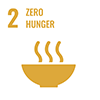

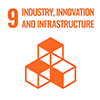
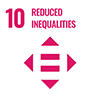
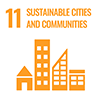
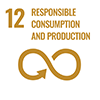
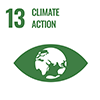
Related journals
This journal is part of our Marketing collection. Explore our Marketing subject area to find out more.
Journal of Services Marketing
Journal of Services Marketing addresses a range of services-related issues of interest to marketing scholars and...
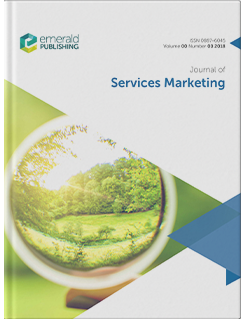
Journal of Contemporary Marketing Science
Journal of Contemporary Marketing Science is published in association with the Chinese Marketing Association of...
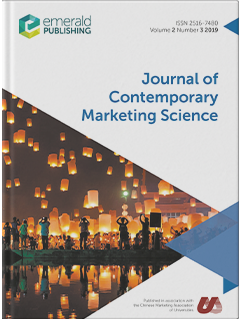
Arts and the Market
Arts and the Market (AAM) is dedicated to publishing high-quality and original contemporary research addressing issues...
